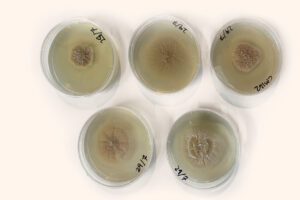Endophytes are naturally occurring fungi that live inside some ryegrass plants. They influence insect tolerance, pasture persistence and production, animal health, and stock performance.
Over many years, endophytes and ryegrass plants have evolved together in nature, forming a mutually beneficial relationship. The endophyte moves into the ryegrass seed before harvest, and when the seed germinates, the endophyte grows within the plant for its entire lifespan.
Endophytes produce alkaloid compounds that are distributed throughout the plant. These alkaloids serve various purposes, such as deterring insect pests, reducing damage, and improving the plant’s longevity and productivity. However, some alkaloids can affect the nervous system and blood circulation of animals that consume the plant.

There is a range of endophyte types available. Some are very safe for animals but offer less insect tolerance than standard endophytes. Others provide strong insect tolerance but can still cause ryegrass staggers. More recently, endophytes have been developed that maximise insect tolerance while eliminating negative impacts on animals.
Endophytes are particularly valuable in regions with high insect pressure or where pasture persistence is a concern. If you farm in an area with frequent pasture pest challenges, choosing an endophyte-enhanced ryegrass can help maintain stronger, more productive pastures for longer.
Choosing the right endophyte depends on your location, livestock type, and pasture management system.
Still unsure? Our team is here to help.
Explore our ryegrass varieties to find the best endophyte-protected options for your farm.